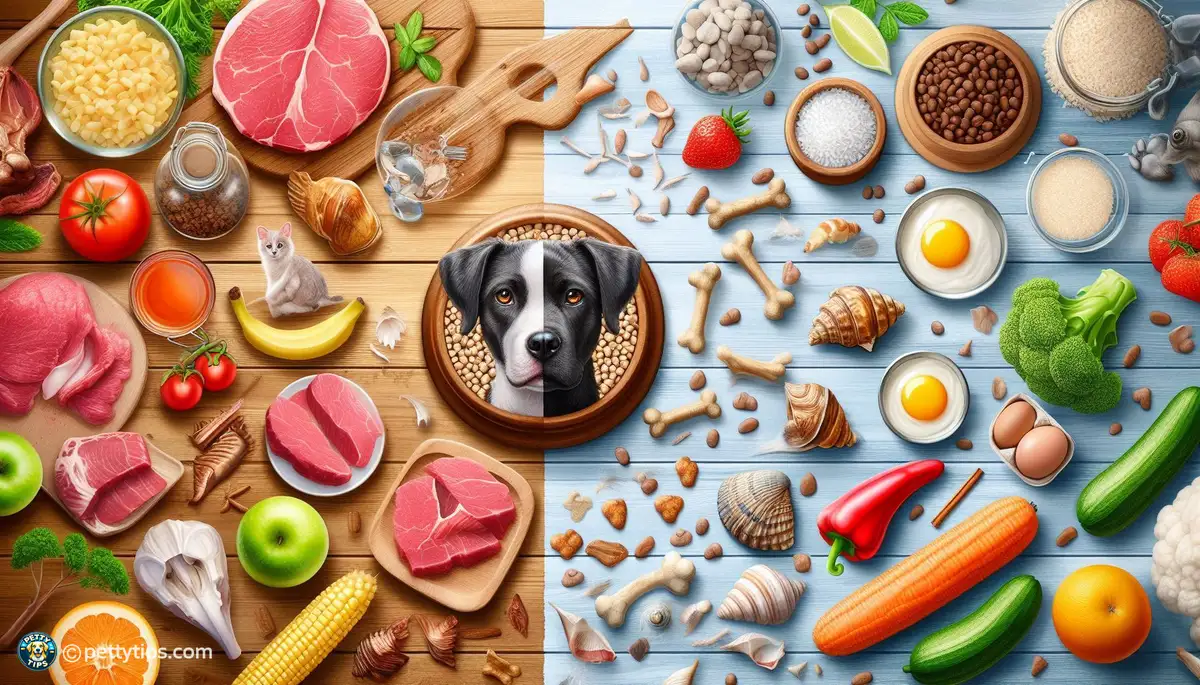Raw vs. Cooked: Pros and Cons of Different Feeding Methods

The Raw Feeding Trend
Raw feeding has gained significant popularity in recent years among pet owners who advocate for a diet that closely mimics what their pets would eat in the wild. Proponents argue that raw diets provide essential nutrients in their most natural form, promoting overall health and vitality in pets. However, this feeding method also comes with its fair share of controversies and considerations.
raw feeding involves feeding pets uncooked meats, bones, and organs, often supplemented with fruits, vegetables, and essential oils. Advocates believe that this diet closely resembles what animals would consume in nature, offering numerous benefits for their health and well-being. raw food enthusiasts claim that this diet can lead to shinier coats, healthier skin, improved digestion, and even better dental health in pets.
The Cooked Food Approach
On the other hand, cooked food diets for pets have been the traditional choice for many pet owners. Cooked diets involve preparing homemade or commercially available pet food by cooking ingredients such as meats, grains, vegetables, and supplements. This method offers convenience and peace of mind for pet owners who may be wary of the risks associated with raw feeding.
Cooked food diets provide a sense of security for pet owners concerned about potential health hazards such as bacterial contamination and parasites commonly associated with raw meat. Cooking food kills harmful pathogens, reducing the risk of foodborne illnesses in both pets and their human companions. Additionally, cooked diets allow for better portion control and nutritional balance, ensuring that pets receive all the essential nutrients they need to thrive.
Pros and Cons of Raw Feeding
Pros of Raw Feeding
One of the primary advantages of raw feeding is the belief that it provides pets with a diet that closely resembles their ancestral eating habits. Advocates argue that raw diets offer superior nutrition by retaining essential enzymes, vitamins, and minerals that may be lost during the cooking process. Additionally, raw feeding allows for greater control over ingredient quality, as pet owners can select organic, human-grade ingredients for their pets.
However, it's essential to acknowledge the potential drawbacks of raw feeding. Critics of this feeding method raise concerns about food safety and the risk of bacterial contamination. Raw meat, bones, and organs can harbor harmful pathogens such as Salmonella, E. coli, and Listeria, posing a risk to both pets and their owners. Moreover, raw diets may not be suitable for all pets, especially those with compromised immune systems or underlying health conditions.
Cons of Raw Feeding
Despite its growing popularity, raw feeding remains a controversial topic among veterinarians and pet nutrition experts. One of the main criticisms of raw diets is the lack of scientific evidence supporting their purported benefits. While some pet owners report positive outcomes such as improved coat condition and energy levels, these anecdotal accounts are not universally supported by empirical research.
Another concern associated with raw feeding is the potential for nutritional imbalances and deficiencies. Without careful formulation and supplementation, raw diets may lack essential nutrients such as calcium, phosphorus, and vitamins. Over time, these deficiencies can lead to health issues such as skeletal abnormalities, immune system disorders, and reproductive problems in pets. Additionally, raw feeding can be costly and time-consuming, requiring careful meal planning and preparation to ensure dietary adequacy.
Pros and Cons of Cooked Food Diets
Pros of Cooked Food Diets
Cooked food diets offer several benefits for pet owners seeking a convenient and nutritionally balanced feeding option. One of the primary advantages of cooked diets is the reduced risk of foodborne illnesses associated with raw meat consumption. Cooking food kills harmful bacteria and parasites, making it safer for pets to consume while minimizing the risk of transmission to humans.
Furthermore, cooked food diets allow for greater flexibility and customization based on individual pet preferences and dietary requirements. Pet owners can tailor homemade or commercially available cooked diets to meet their pet's specific nutritional needs, including factors such as age, breed, and activity level. Additionally, cooked diets offer peace of mind for pet owners concerned about ingredient quality and sourcing, as commercially available options often undergo rigorous quality control measures.
Cons of Cooked Food Diets
Despite their advantages, cooked food diets also have their share of drawbacks and considerations. One of the main criticisms of cooked diets is the potential for nutrient loss during the cooking process. Heat can degrade certain vitamins and enzymes present in raw ingredients, potentially affecting the overall nutritional quality of the food. To mitigate this risk, pet owners may need to supplement cooked diets with additional vitamins and minerals to ensure dietary adequacy.
Another concern associated with cooked food diets is the potential for ingredient quality and sourcing issues, particularly with commercially available pet food products. While some pet food manufacturers prioritize quality and transparency in their ingredient sourcing and production processes, others may prioritize cost-cutting measures and use lower-quality ingredients. Additionally, cooked diets may be less palatable for some pets, leading to issues such as picky eating behavior or reluctance to consume certain foods.
